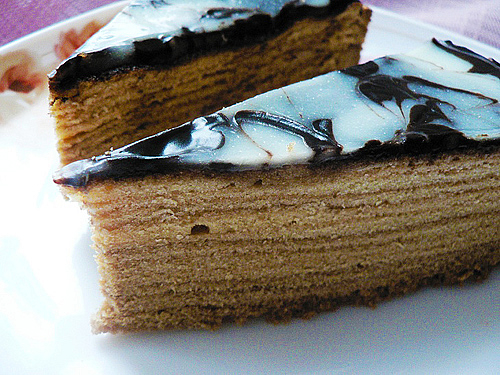Baumkuchen, often referred to as the “King of Cakes,” is a traditional German cake that’s as rich in flavor as it is in history. This unique cake is known for its characteristic rings that resemble tree rings, hence its name, which literally translates to “tree cake.” This article delves into the history, preparation, and cultural significance of Baumkuchen, providing readers with a comprehensive understanding of this exquisite pastry.
The History and Origin of Baumkuchen
Baumkuchen has a storied past, with its origins dating back several centuries. It is believed to have originated in Europe, with some sources citing its roots in the 15th century. The cake gained popularity in Germany, where it was perfected and became a staple at various celebrations, including weddings and Christmas festivities.
During the 20th century, Baumkuchen found its way to Japan, where it was embraced with enthusiasm and became a traditional gift during the holiday season. Today, it holds a special place in both German and Japanese confectionery traditions.
The Unique Preparation of Baumkuchen
What sets Baumkuchen apart from other cakes is its distinctive preparation method. The cake is made by brushing thin layers of batter onto a rotating spit or cylinder, which is then caramelized under a broiler or over an open flame. This process is repeated multiple times, creating up to 15 to 20 layers, resulting in a cake with a unique ringed appearance.
The basic ingredients of Baumkuchen include butter, sugar, eggs, vanilla extract, salt, almond paste, and flour. Some variations also incorporate rum or lemon zest for added flavor. The key to a successful Baumkuchen lies in the consistency of the batter and the patience required during the layering process.
For home bakers, a simplified version of Baumkuchen can be made using an oven and a regular cake pan, although this method won’t produce the traditional ringed appearance.
Ingredients:
7/8 cup unsalted butter, softened
1 cup sifted confectioners’ sugar
7/8 cup cornstarch
2 tbsp rum
150 g almond paste
1 1/2 teaspoons vanilla extract
1 pinch salt
2 egg yolks
6 egg whites
3/4 cup white sugar
3/4 cup all-purpose flour
1/2 cup apricot jam, melted
9 (1 ounce) squares semisweet chocolate (optional)
2 1/2 teaspoons vegetable oil (optional)
Preparation:
1. Whip butter and sugar well until creamy.
2. Gradually add egg yolks and the remaining ingredients to the butter-sugar mixture until a light, foamy batter forms.
3. Beat egg whites until very stiff and stir gently into the batter.
4. Pour about 2 tablespoons batter (a thin covering) into a 8-1/2″ springform pan greased with butter.
5. On the uppermost oven rack, bake (or broil) in a preheated oven at 450° F (230° C) for 2 minutes or until golden brown. Watch carefully, this browning can take place very quickly.
6. Repeat until all the batter is gone — you should have about 14 to 16 layers.
7. When the cake is done, let it stand a few minutes before running a sharp knife along the sides of the pan. Remove the cake from the pan and glaze with melted apricot jam.
8. Once the jam is set, you can add an additional glaze of thinned almond paste or immediately finish the cake with a thin icing made from powered sugar or your favorite chocolate, melted with vegetable oil.
Baumkuchen is more than just a cake; it’s a symbol of craftsmanship and tradition. In Germany, it’s often associated with celebrations and is a popular Christmas treat. In Japan, it’s considered a symbol of longevity and prosperity, making it a favored gift during the New Year and other special occasions.
Baumkuchen is a testament to the artistry and tradition of baking. Its unique preparation, rich history, and delightful taste make it a beloved dessert in Germany and beyond. Whether you’re a seasoned baker or a curious food enthusiast, trying your hand at making Baumkuchen or simply enjoying a slice of this exquisite cake is a culinary journey worth taking.

